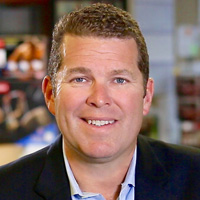In this post, I’m abbreviating my five-year journey from business school to finally starting my first business, and the point I’m making is that if you don’t keep your dream alive no one else will.
What was my dream? When I arrived at business school, my goal was to become an Inc. 500 founder/CEO within ten years. As you may know, Inc. Magazine—or simply, “Inc.”—has been dedicated exclusively to owners and managers of growing private companies since the late 70’s, and is probably best known for its annual rankings of the fastest-growing privately held companies in the United States, called the “Inc. 500.”
Where did it start? Before I conducted my first 6-month deployment as a Navy SEAL platoon commander in January 1995, I had purchased the most recent edition of Inc. Magazine that just happened to include the annual list of fastest growing companies. Knowing that I’d have hours of downtime on the submarine, I brought that magazine with me and read it cover to cover many times during that overseas deployment. That was when I decided that I’d someday create a company and earn a spot on the Inc. 500—I even carried the folded-up magazine cover with me in my briefcase.
Where did my journey go? Most of my deployment was aboard the USS James K. Polk (SSBN-645), a specially-converted Benjamin Franklin class fleet ballistic missile submarine. After my third deployment, I left active duty, joined the reserves, and attended business school to learn how to be an entrepreneur. The cover of the 1995 Inc. Magazine had long since vanished, but not its memory nor my goal to be an Inc. 500 CEO.
It took a detour, but my dream stayed alive. In business school, I was bombarded with different career paths—from working on Wall Street to working up the corporate ladders in the largest companies in the world. The weekly pitches from recruiters promoting their own companies’ goals caused my Inc. 500 dream to fade. Instead, I joined a tech startup in the Bay area, trying to keep my entrepreneurial dream alive, only to find myself miserable—I didn’t write code, didn’t understand how it worked, and honestly wasn’t really interested in bits and bytes. Feeling frustrated and depressed—and doubting my decision to leave SEAL Team in the first place—I was close to returning to active duty, until…
My swim buddy got me focused. In my despair, it was my wife who reminded me of my original reason for going to business school—to build an Inc. 500 company. As I’ve said before, “If you don’t keep your dream alive, then no one else will”—unless you have a swim buddy to remind you, like my wife. The other reminder that helped put my goals back in focus was the fact that I had written them down originally. My own experience has borne out the findings of multiple studies—such as the Harvard study on goal setting—that writing something down and seeing it daily will help you stay focused on working toward it.
For your dreams to work, you must work. The act of writing something down, such as defining a goal, is an act of creation. As simple as it sounds, your handwriting is unique, and writing down your dream sets you on a course toward creating something uniquely your own. Step one in my Unstoppable Goals System is declaring to yourself what you want and why you want it. The next step is remembering your goal and keeping your dream in sight and in focus, which is the purpose behind my Unstoppable Vision Board. Obviously, it takes much more for your dream to become reality, but you must climb the mountain one step at a time and remember, “For your dream to work, you must work.”
Commit to daily action toward your goal. I had lost my dream for a while when I was at business school, because I got distracted by other people’s (companies’) dreams. Eventually, I found it again in 2003, wrote it down, and placed it on a 3”x5” card on my desk:
“Build an Inc. 500 company in 5 years.”
Every day, I woke up to see that card, and I developed a habit of asking myself, “What action can I do today to get closer to my goal?” Admittedly, there were bleak times when I didn’t think my dream would ever become reality—my first two startups failed miserably—and I had raised $1.5 million dollars from investors only to discover $1.475 million dollars worth of ways not to launch a product. With the remaining $25,000 dollars and a very small—but committed—team, we launched Perfect Pushup. Three years later, in November 2008, Inc. Magazine notified us that we had made the list; and two months later, we were ranked #4 on the Inc. 500 list of fastest-growing privately held companies in the United States.
“UNSTOPPABLE is a Mindset. I want to be very clear with you: there’s much more to accomplishing a dream than just writing it down—BUT, writing down what you want and why you want it, and reminding yourself daily of your dream, is extremely helpful in keeping yourself inspired and working on your goal, especially on those days when you feel like you’re going backwards! Visit BeUnstoppable.com for detailed stories on how to turn your dreams into reality—hint: they ALWAYS involve persistent daily action.
If you’re serious about achieving your dreams, check out my Unstoppable Goals System. It has all you need to get started, and you can take it everywhere you go—no excuses for forgetting about your dream! We are all born to Be Unstoppable—but, it is up to us to choose to Be Unstoppable, and that choice is made every day. My mission is to help you Be Unstoppable at achieving your dreams. When you succeed, you are helping me accomplish my dream.
BE UNSTOPPABLE Products and BE UNSTOPPABLE Courses can help you on your path to success. It is our mission to help you acquire not just the tools you need to survive uncertain times and adversity, but also to develop the mindset and actions required to thrive and accomplish more than you originally thought possible.





